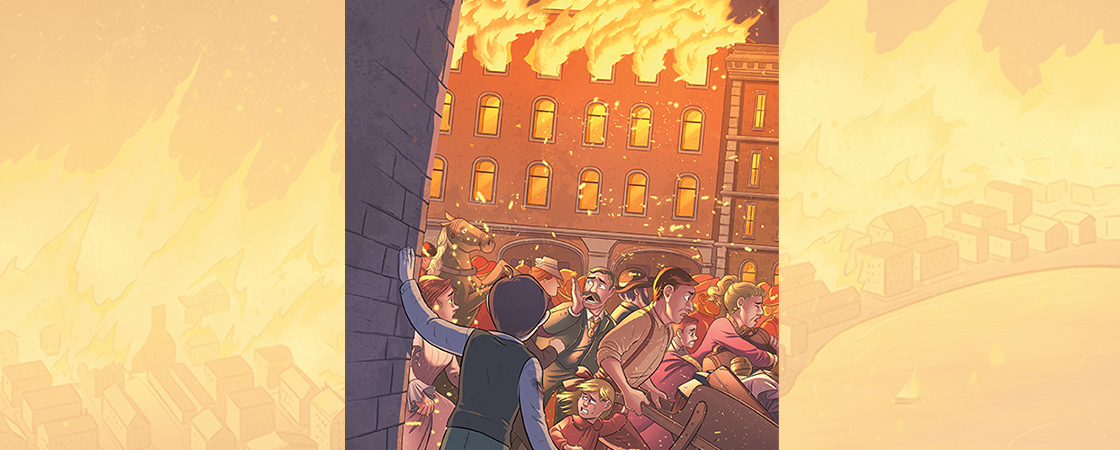Thirteen-year-old Bessie Bradwell walked through Chicago’s streets. All around her, the city was burning. Flames shot high into the air. Hunks of burning wood came falling from the sky.
It was October 8, 1871. The city of Chicago, Illinois, was on fire. Hundreds of buildings had already burned to the ground. Thousands of people filled the streets. Their screams rose over the fire’s crackling roar.
Worst of all, Bessie couldn’t find her parents and brother. Soon, much of Chicago would be destroyed.
And Bessie was on her own.
Bessie Bradwell walked through Chicago’s streets. She was 13 years old. The city was burning all around her. Flames shot high into the air. Hunks of burning wood came falling from the sky.
It was October 8, 1871. The city of Chicago, Illinois, was on fire. Hundreds of buildings had already burned. Thousands of people filled the streets. Their screams rose over the crackling sounds of the fire.
Even worse? Bessie couldn’t find her parents and brother. Soon much of Chicago would be destroyed.
And Bessie was on her own.
It was 1871. The city of Chicago, Illinois, was an exciting place to live. It was becoming one of the most important cities in the country.
But on October 8, a fire started in Chicago. Thousands of people ran into the streets. Thirteen-year-old Bessie Bradwell was one of them. She couldn’t find her family. Soon much of Chicago would be destroyed.
And Bessie was on her own.

